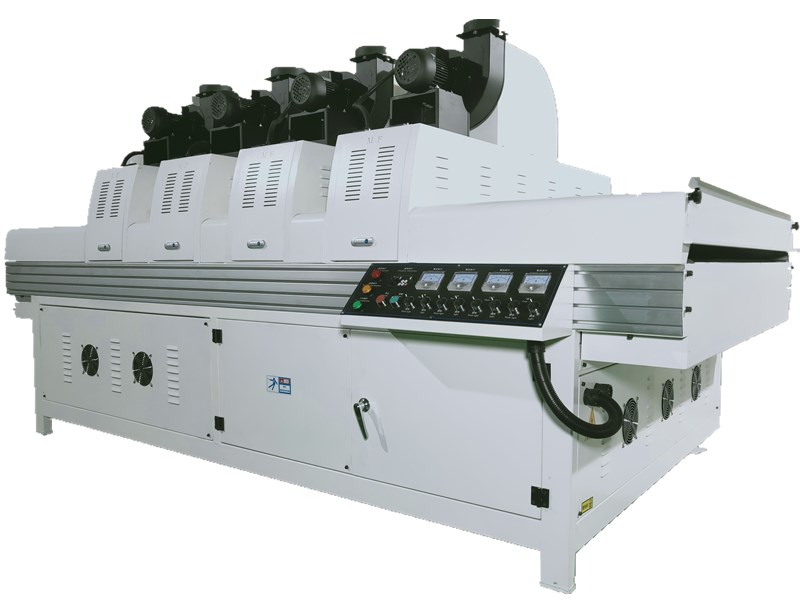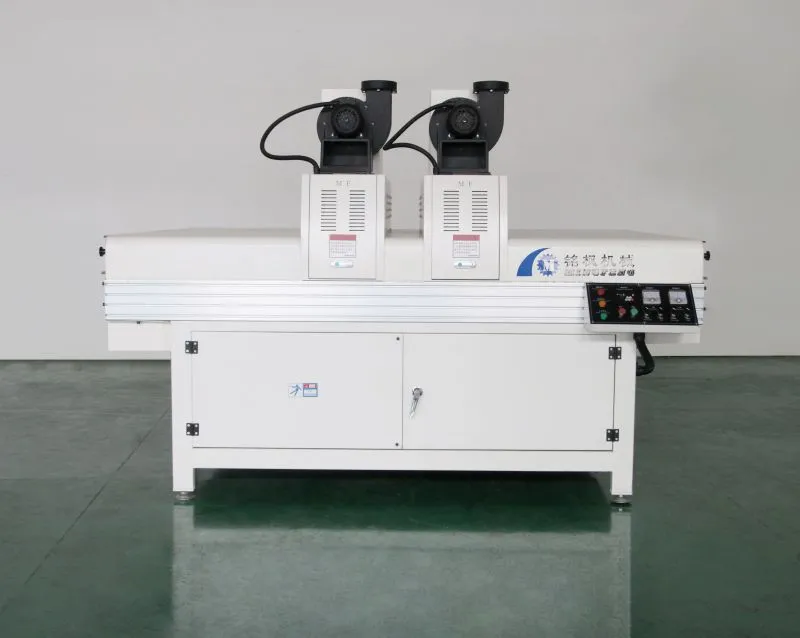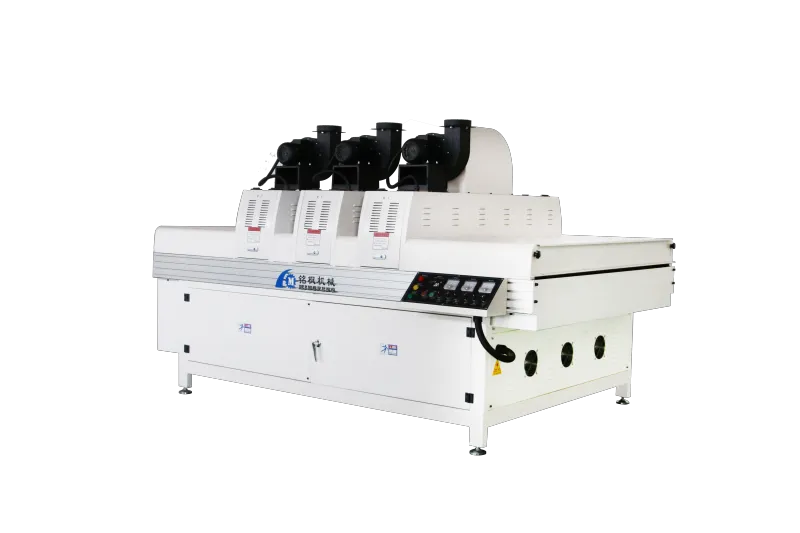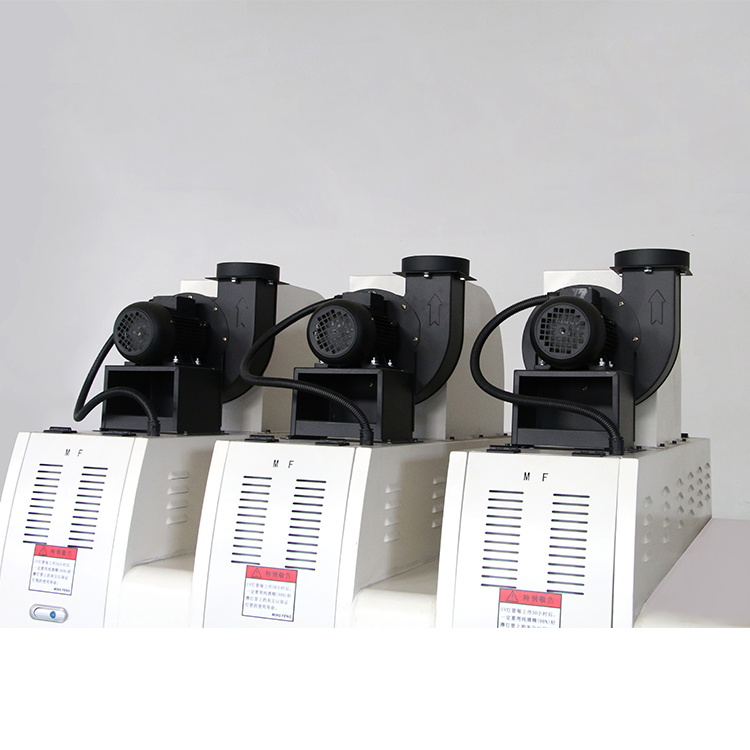A wood UV drying machine can be inherently safe, but its safety depends on the equipment's design, installation and maintenance, operating procedures, personnel protection, and monitoring systems. UV radiation can leak and cause eye and skin damage, ozone, or heat problems, but these risks can be prevented and controlled through engineering controls, management measures, and personal protection.
Below, I've broken down the question into a series of common and critical sub-questions and answered them in detail. This covers the physical and chemical mechanisms, differences in equipment types, leakage pathways, and consequences. This will provide you with a clear basis for judgment and operation when purchasing, accepting, operating, and managing a wood UV drying machine.

What does "UV" mean in a wood UV drying machine?
What do the different wavelengths mean?
Ultraviolet radiation is generally classified into three categories based on wavelength: UVA (near ultraviolet, 315–400 nm), UVB (medium wave, 280–315 nm), and UVC (short wave, 100–280 nm).
• UVA (near-ultraviolet, 315–400 nm): This has relatively strong penetrating properties and is commonly used in LED UV curing (e.g., 385–405 nm). The risk of chronic photodamage to skin and eyes is relatively low, but prolonged exposure to high doses can still cause damage.
• UVB (medium-wave, 280–315 nm): This can cause sunburn, promote photochemical reactions, and be more damaging to certain components in wood.
• UVC (shortwave, 100–280 nm): This is the most photochemically active, rapidly destroying organic molecules and producing ozone. It is not typically used directly in most wood UV curing applications, but traditional mercury lamps may contain a shortwave component.
In wood UV drying machines, the common light sources are mercury vapor UV lamps (broad-spectrum UV lamps with shortwave) or UV-LEDs (narrow-spectrum near-ultraviolet). The choice of light source directly impacts safety and leakage risk: Mercury lamps have a broad spectrum, generate high heat, and may produce ozone; LEDs have a narrow spectrum, generate less heat, and do not contain mercury. However, it is important to ensure that the photoinitiator in the coating matches the LED wavelength to achieve curing.

Wood UV drying machine: What are the hazards of UV leakage?
What are the respective effects on humans and wood?
UV hazards to humans:
• Eyes: High-intensity UV radiation can cause acute damage to the cornea and conjunctiva (such as "snow blindness" or photokeratitis), manifesting as pain, tearing, photophobia, and blurred vision. Prolonged, repeated low-dose exposure is associated with long-term ocular surface damage.
• Skin: Short-term, high-dose exposure can cause erythema and pain; long-term, repeated exposure can accelerate skin aging and increase the risk for people with photosensitivity.
• Respiratory/ozone issues: If a wood UV drying machine generates ozone (some mercury lamps in the short-wavelength range do), ozone can irritate the upper respiratory tract and eyes and harm respiratory health.
• Heat damage and burn risks: The high heat of the light source and close proximity can cause burns or increase the surface temperature of flammable materials.
UV hazards to wood and paint films:
• UV radiation can cause photochemical degradation of unshielded wood, resulting in discoloration, surface fiber degradation, yellowing, or brittleness.
• Heat and high energy levels can cause resins and oils in the wood to migrate to the surface, affecting coating adhesion. Excessive instantaneous energy can cause the paint film to cure rapidly on the surface but not cure internally, leading to blistering or cracking.
Therefore, in wood processing lines, a suitable primer is usually applied first for sealing, followed by curing in a wood UV drying machine. Line speed and energy are controlled to protect the substrate.

Wood UV Drying Machine: Can UV rays "leak"? How does leakage occur?
Yes, leakage primarily arises from the following:
1. Structural defects or poor sealing
If equipment doors, observation windows, vents, or maintenance openings lack proper light shielding or filtering, UV rays can leak through these gaps.
2. Interlock or protection failure
If the door interlock, emergency stop, or light shutter system is damaged or bypassed, the equipment may emit light when open, resulting in direct exposure.
3. Unqualified viewing windows or sight glasses
If the viewing window does not use appropriate light-blocking and filtering materials (such as UV-absorbing coatings or filters), even people standing close to the window will be exposed to the light.
4. Aging or Improper Reflective Materials
Improperly designed reflective panels or inner wall reflective materials can redirect UV light in unintended directions. Aging and cracking of seals or light shields can also cause leakage.
5. Human Exposure During Maintenance
If the power is not turned off or shielded during lamp repair or replacement, workers are exposed to direct UV light or may be exposed to UV radiation.
Therefore, "leakage" is not just an optical issue; it also presents risks arising from management, maintenance, and human behavior.
How can I determine if a wood UV drying machine has UV leakage?
What detection methods are available?
1. Using a UV radiometer/ultraviolet meter
This is the most direct method. Measure point-by-point at the operating height and around every possible gap in the equipment, record the irradiance, and compare it to safety limits. A radiometer can measure UVA, UVB, UVC, or a combination of these, so choosing an instrument with the appropriate wavelength is crucial.
2. Using a UV imaging camera or UV fluorescent paper/test strips
UV imaging can clearly indicate where light leakage is occurring; fluorescent paper or materials glow when exposed to UV light, providing a quick inspection method.
3. Regular Audible, Visual, and Interlock Self-Tests
The pre-startup self-test should verify the effectiveness of the interlocks. Interlock failure will be considered a failure.
4. Personnel Health Monitoring and Questionnaires
Regularly record any early symptoms, such as eye or skin discomfort, experienced by operators as indirect indicators.
5. Frequency of Testing
Daily visual inspection and door interlock testing; monthly or quarterly inspections of key points using a radiometer; and retesting after equipment modifications or maintenance. Measurement results should be recorded and compared against a baseline.
(Note: The specific permissible exposure threshold should refer to local occupational safety standards or limits published by authoritative organizations. These standards should be used as the basis for testing.)
Wood UV Drying Machine: What are the engineering controls?
How can the risk of leakage be reduced to an acceptable level?
A. Physical Enclosure and Light Shielding
• Completely enclosed light box design: The light source is completely enclosed in a light-tight cavity, and the viewing port uses a certified UV-filtered window or shielding device.
• Door and Maintenance Port Interlock: Manually opening the door immediately shuts off the UV power supply and prevents the lamp from igniting.
• Flexible Curtains or Shields: Use light-blocking curtains or lockable viewing windows at necessary openings.
B. Optical and Material Control
• Reflector and Liner Selection: Select reflective materials that improve curing efficiency while not directing UV light outward (and install light-blocking shields).
• Filters and Shielding: If the lamp has a shortwave component, use filters to reduce harmful wavelengths (or replace it with LEDs).
C. Exhaust and Ozone Treatment
• Professional Exhaust: Remove heat and any ozone generated from the lamp box. The exhaust outlet should be equipped with activated carbon or a catalytic decomposer to decompose ozone and harmful substances.
D. Safety Systems and Monitoring
• Light Intensity Monitoring and Automatic Alarms: Install an online radiometer to monitor lamp output and trigger an alarm or shutdown if an abnormality occurs.
• Window Optical Seals and Alarms: Automatically shut down the machine if the window is opened or damaged.
By prioritizing engineering controls (i.e., eliminating hazardous sources > technical isolation > management measures > personal protection), the risk of UV leakage can be reduced to an acceptable level within the industry.

Operating a wood UV drying machine: What personal protective equipment (PPE) should be used?
• UV goggles/face shield: Goggles or a face shield that blocks UV wavelengths (in the µm range corresponding to the wavelength used) must be used. Ordinary transparent safety goggles cannot replace UV goggles.
• Sunshade face shield or goggles with side shields: Goggles should be well-protected to prevent side scatter from entering the eyes.
• Protective clothing and long-sleeved gloves: Cover exposed areas as much as possible and use low-reflective fabric.
• Protective gloves: Prevent burns and contact with chemicals (if solvents are present) when replacing or maintaining lamps.
• Respiratory protection (if necessary): If ozone or volatile substances exceed the standard, use a mask or supplied air mask of the appropriate rating.
PPE is the last line of defense and should not replace project containment and management measures. The effectiveness of PPE must also be regularly checked (for example, protective goggles should be worn to prevent wear and scratches).
Which is safer, LED UV or mercury vapor lamps?
How should I choose between them in a wood UV drying machine?
• LED UV: Narrow wavelength (commonly 385–405 nm), relatively low heat generation, no mercury, low ozone generation, instant ignition, and long life. Advantages include low operating and maintenance costs, low heat load, and minimal impact on the operating room environment. Disadvantages include the requirement to match the formulation (coating) to the LED wavelength, requiring modifications to some pigments or formulations.
• Mercury lamps (broadband): Broader spectral coverage, a strong shortwave component, excellent curing performance, and high compatibility with various traditional formulations. However, they generate high heat, may generate ozone, contain mercury, require special disposal, and require more frequent maintenance.
Safety Perspective: If the coating material supports this and the process allows, LED UV is generally superior to mercury lamps in terms of safety and environmental performance due to the reduced risks associated with shortwave, ozone, and mercury. However, the actual choice should be based on a comprehensive assessment of coating compatibility, production capacity, and economics.
What should be done if a UV leak is suspected or someone has been exposed?
Emergency Steps:
• Immediately shut off the UV light source and stop the conveyor to ensure that no further exposure occurs.
• Evacuate and isolate the area, prohibiting entry to unauthorized personnel.
• Conduct a preliminary assessment of suspected exposed personnel: If acute eye pain, photophobia, tearing, blurred vision, or skin burning occurs, seek medical attention immediately, as this may indicate UV/photochemical damage. Eye symptoms require prompt examination by an ophthalmologist (corneal damage requires specialized treatment).
• Record the incident and exposure conditions: Record the time, operating status, lamp power, and any interlock failures or maintenance activities.
• Technical Troubleshooting: Use a radiometer to measure leaks and repair seal/interlock issues. Work may resume only after passing the test.
• Reporting and Training: Prepare an incident report and retrain relevant personnel to prevent recurrence.
After an incident, the focus is on protecting victims, shutting down the machine for investigation, and resolving potential hazards.
"Is a wood UV drying machine safe? Can UV light leak?"
--Summary Answer:
• Safety: A wood UV drying machine can be safe, but it's not inherently safe. Safety depends on equipment design (enclosure, interlocks, and light filtering), light source type (LEDs are preferred over mercury lamps), ventilation and ozone treatment, strict operation and maintenance procedures, and personnel protection and training. As long as these steps are in place, the equipment will not pose an unacceptable hazard to operators or nearby personnel during normal operation.
• Possibility of Leakage: UV light leaks are possible. Leaks are usually caused by structural gaps, damaged seals, bypassing interlocks, or improper maintenance. Detection (radiometers, imaging, or fluorescent paper) and prevention (enclosures, interlocks, and light filtering) are key to managing leaks.
• Operation and Emergency: Establishing lockouts, maintaining PPE, regular calibration and testing, and developing and rehearsing emergency response procedures are essential steps to keep risks within acceptable levels.
